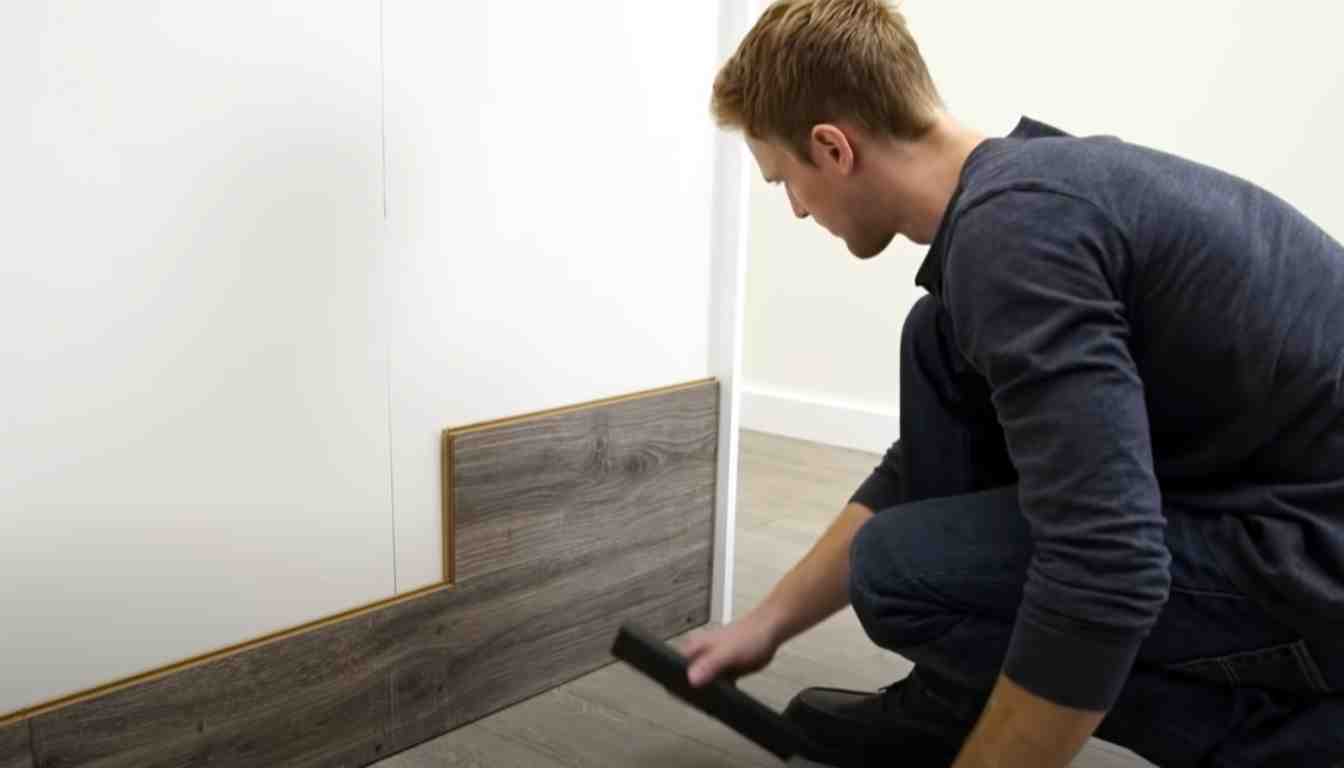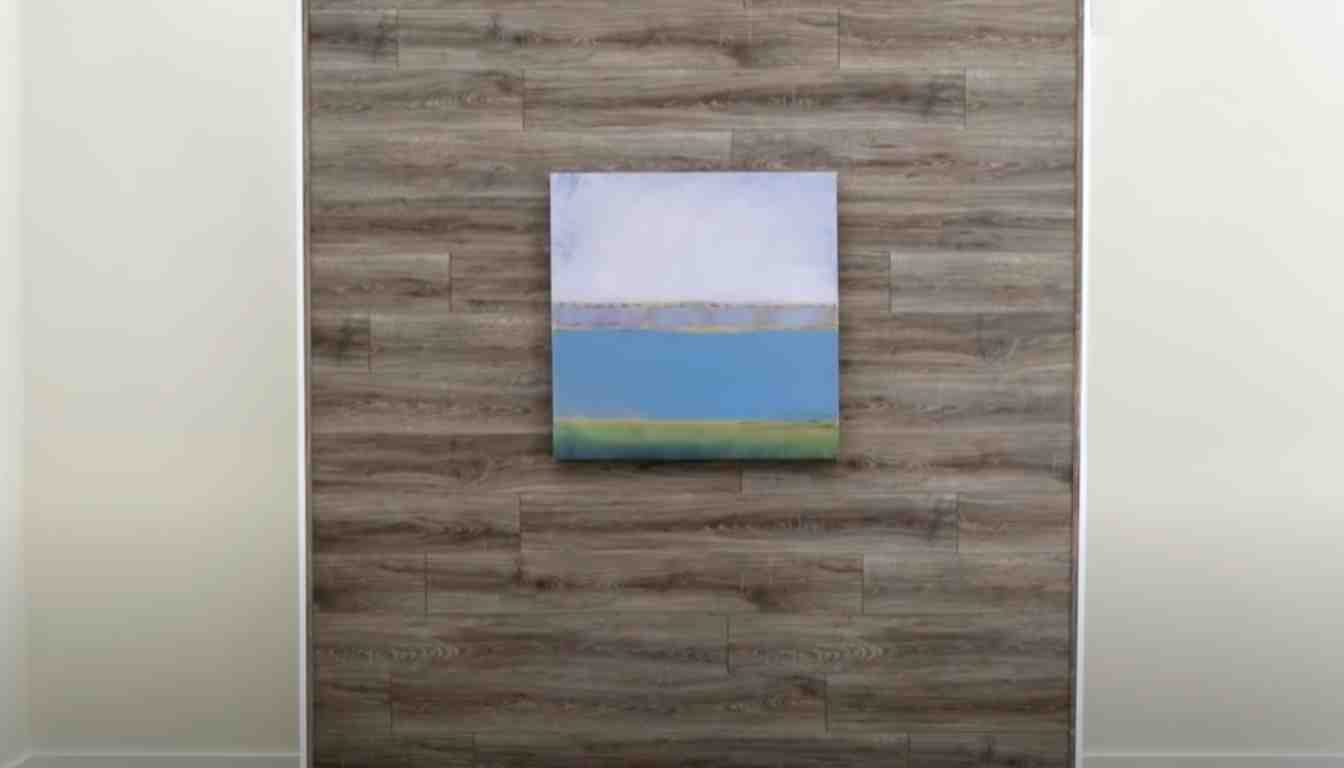Yes, laminate flooring can be used on walls due to its durability and easy installation process. Laminate flooring provides a cost-effective and aesthetically pleasing alternative to traditional wall coverings, giving your space a modern and trendy look.
Whether it’s for a feature wall or to cover the entire room, laminate flooring on walls can add texture and warmth to any space. With a wide range of colors, styles, and finishes available, you can easily find the perfect laminate flooring to suit your design preferences.
Additionally, laminate flooring on walls is easy to clean and maintain, making it a practical choice for high-traffic areas.
2. Understanding Laminate Flooring
Laminate flooring isn’t just limited to the floor; it can also be used on walls. With its durability and easy installation, laminate flooring adds a stylish touch to any room, providing a cost-effective and innovative design option.
2.1 What Is Laminate Flooring?
Laminate flooring is a popular and cost-effective flooring option that is made up of several layers fused together. The top layer is a printed design that mimics the appearance of real wood, ceramic tile, or stone, while the middle layer is a high-density fiberboard (HDF) core that provides stability. The bottom layer is a backing that helps to resist moisture and provides added support.
Laminate flooring is created through a lamination process, hence its name. The layers are bonded together using heat and pressure, resulting in a durable and versatile product that offers the look of more expensive flooring materials at a fraction of the cost.
2.2 Advantages Of Laminate Flooring
Laminate flooring offers several advantages that make it a desirable choice for homeowners:
- Cost-effective: Laminate flooring is significantly less expensive than traditional hardwood, ceramic tile, or stone flooring options, making it a budget-friendly choice for those who want the look of more expensive materials without the high price tag.
- Durability: The wear layer on laminate flooring protects against scratches, stains, and fading, making it suitable for high-traffic areas and households with pets or children.
- Easy installation: Laminate flooring is often designed with a click-lock or tongue-and-groove system, making it simple to install without the need for professional assistance. This can save both time and money during the installation process.
- Variety of styles: Laminate flooring comes in a wide range of designs, colors, and finishes, allowing homeowners to choose the look that best complements their aesthetic preferences and existing decor.
- Low maintenance: Laminate flooring is easy to clean and requires minimal maintenance. Regular sweeping and occasional damp mopping are typically all that is needed to keep laminate floors looking their best.
2.3 Common Uses Of Laminate Flooring
Laminate flooring is a versatile flooring option that can be used in various areas of the home. Some common uses of laminate flooring include:
- Living areas: Laminate flooring is a popular choice for living rooms, dining rooms, and bedrooms, as it offers a comfortable and stylish surface that can withstand everyday wear and tear.
- Kitchens: Many homeowners opt for laminate flooring in their kitchens due to its easy maintenance and resistance to moisture, making it a practical choice for this high-traffic area.
- Basements: Laminate flooring can be used in basements, as it can withstand moisture when installed with a moisture barrier or underlayment.
- Commercial spaces: The durability and cost-effectiveness of laminate flooring make it a popular choice for commercial spaces such as offices, retail stores, and restaurants.
Overall, laminate flooring is a versatile and affordable option that provides the look of more expensive materials without breaking the bank. Whether used in residential or commercial spaces, laminate flooring offers durability, easy installation, and a wide range of design options to suit any style.

3. The Benefits Of Using Laminate Flooring On Walls
Discover the countless benefits of using laminate flooring on walls. Enhance the aesthetics of any space, experience easy installation, and enjoy the durability and low maintenance of this versatile material. Embrace laminate flooring for a stylish and practical solution for your wall designs.
Beyond its traditional use on floors, laminate flooring is increasingly being used on walls as a creative design option. Not only does it add a touch of elegance and uniqueness to any space, but it also comes with a range of benefits that make it an attractive choice for wall coverings. Let’s explore some of the advantages of using laminate flooring on walls.
3.1 Enhanced Aesthetics
Laminate flooring offers a wide variety of designs, colors, and patterns, allowing you to create a stunning visual impact on your walls. Whether you prefer a sleek modern look or a rustic vibe, laminate flooring can effortlessly transform your walls to match your desired aesthetic. Its vibrant surface adds depth and texture to the space, making it visually appealing and inviting.
3.2 Easy Installation
Installing laminate flooring on walls is a relatively simple and hassle-free process. With its click-lock system, you can easily snap the planks into place without the need for specialized tools or adhesives. This makes it a convenient option for DIY enthusiasts and saves both time and effort. Whether you’re considering a small accent wall or covering an entire room, laminate flooring offers a quick and straightforward installation process.
3.3 Cost-effective Solution
When compared to other wall coverings, laminate flooring presents a cost-effective solution that doesn’t compromise on quality and aesthetics. It is often more affordable than traditional materials like wood or stone, making it an excellent choice for those on a budget. Additionally, laminate flooring requires minimal maintenance, reducing long-term expenses, such as repainting or refinishing. By opting for laminate flooring on your walls, you can achieve a stylish look without breaking the bank.
3.4 Durability And Maintenance
Laminate flooring is well-known for its durability, which extends to its use on walls. It is designed to withstand daily wear and tear, making it resistant to scratches, stains, and fading. This durability ensures that your walls will remain beautiful and intact for years to come. Furthermore, laminate flooring is easy to clean and maintain, requiring only simple care routines such as regular dusting and occasional wiping to keep it looking brand new.
3.5 Versatility Of Design Options
One of the standout advantages of using laminate flooring on walls is its versatility in design options. Whether you prefer a traditional wood-inspired look, a sleek and modern appearance, or even a geometric pattern, laminate flooring offers countless design possibilities to suit any style preference. This versatility allows you to create a customized and personalized look for your walls, turning them into a statement piece within your space.
4. Factors To Consider Before Using Laminate Flooring On Walls
When it comes to interior design, using laminate flooring on walls has become a popular trend. Not only does it bring a unique and stylish look to any space, but it also offers durability and easy maintenance. However, before diving into this trend, there are several important factors you should consider to ensure a successful installation.
4.1 Wall Preparation
Proper wall preparation is essential before installing laminate flooring. The surface must be clean, dry, and free of any debris or imperfections that could affect the adhesive bond. Take the time to thoroughly clean the walls and repair any cracks or holes to ensure a smooth and even surface.
4.2 Moisture And Humidity
Moisture and humidity levels can have a significant impact on the performance of laminate flooring on walls. Excessive moisture can cause the laminate to warp, buckle, or peel over time. Before installation, it is crucial to assess the moisture and humidity levels in the room. Use a moisture meter to determine if the walls are suitable for laminate installation.
4.3 Structural Integrity
Laminate flooring is designed to be installed on flat and stable surfaces. Before applying laminate to your walls, ensure that the structural integrity of the walls is sound. Check for any signs of structural damage, such as cracks or shifting, and address these issues before proceeding with the installation.
4.4 Adhesive Selection And Application
Choosing the right adhesive is essential for a successful installation. Select an adhesive that is specifically designed for laminate flooring on walls. Follow the manufacturer’s instructions carefully during application, paying attention to the recommended coverage, drying time, and temperature requirements. Ensure a proper and even spread of adhesive to promote a strong bond with the laminate flooring.
4.5 Impact On Insulation And Acoustics
It is important to consider the impact of laminate flooring on walls on insulation and acoustics. The addition of laminate may affect the room’s insulation properties, as it creates an additional barrier between the walls and the interior space. Additionally, laminate flooring on walls may have an impact on the room’s acoustics, potentially amplifying sound reflections or reducing sound absorption. Take these factors into account when deciding on the placement of laminate on your walls.

5. Step-by-step Guide For Installing Laminate Flooring On Walls
Discover the step-by-step guide for installing laminate flooring on walls. Find out whether or not laminate flooring can be effectively used on walls and learn how to successfully install it for a fresh and modern look in your living space.
5.1 Gather The Necessary Tools And Materials
Before you begin installing laminate flooring on your walls, it’s crucial to gather all the necessary tools and materials. This will ensure a seamless installation process and save you time and effort. Here’s a checklist of what you’ll need:
| Tools | Materials |
|---|---|
| Measuring tape | Laminate flooring planks |
| Pencil or marker | Adhesive |
| Saw (either a jigsaw, circular saw, or hand saw) | Wall anchors |
| Level | Finishing nails or screws |
| Putty knife | Sealant (optional) |
| Hammer | |
| Drill | |
| Painter’s tape |
5.2 Prepare The Wall Surface
Preparing the wall surface is a crucial step to ensure that the laminate flooring adheres properly and creates a solid foundation. Follow these steps:
- Clear the wall of any obstacles or decor items. Remove nails or screws, and fill any holes with putty.
- Clean the wall thoroughly using a damp cloth or sponge to remove any dirt, dust, or grease.
- Inspect the wall surface for any cracks or damages. Repair them using appropriate methods according to the wall material.
- Use painter’s tape to protect adjacent surfaces, such as baseboards or windows, from adhesive or accidental scratches.
5.3 Apply Adhesive And Install The Laminate Planks
Now that your wall is prepped, it’s time to apply adhesive and install the laminate flooring planks. Follow these steps for a successful installation:
- Using a trowel or putty knife, apply adhesive evenly on the back of each plank. Ensure the adhesive layer is not too thick or too thin.
- Starting from the bottom of the wall, place the first plank against the wall, using spacers to create a small gap between the plank and the floor.
- Continue placing subsequent planks, locking them tightly together using the appropriate interlocking system.
- For corners or edges, carefully measure and cut the planks using a saw to achieve a precise fit.
- Repeat the process, row by row, until you reach the top of the wall.
5.4 Finishing Touches And Recommended Sealant
Once all the laminate flooring planks are installed on the wall, it’s time for the finishing touches. Follow these steps:
- Inspect the installed planks and make any necessary adjustments to ensure they are straight and aligned.
- If desired, apply a recommended sealant to the exposed edges of the laminate planks. This step will provide additional protection against moisture and give a polished look to the finished installation.
5.5 Care And Maintenance Tips
To ensure the longevity and beauty of your laminate flooring on the walls, keep in mind these care and maintenance tips:
- Regularly dust the surface with a microfiber cloth or vacuum cleaner to remove any loose particles.
- Wipe spills or stains immediately using a damp cloth or appropriate cleaning solution. Avoid excessive moisture, as it can damage the laminate flooring.
- Avoid using harsh chemicals or abrasive cleaners that could potentially scratch or dull the surface.
- Protect the laminate flooring from direct sunlight by using blinds or curtains to prevent fading.
- Avoid dragging furniture or heavy objects across the laminate planks. Use furniture pads or lift the items instead.
6. Alternative Wall Covering Options
When it comes to transforming the look of your walls, laminate flooring may not be your only option. In fact, there are several alternative wall covering options that can add a touch of uniqueness and style to any space. Whether you want to create a modern, rustic, or traditional aesthetic, these options offer versatility and easy installation. Let’s explore some of the top alternatives to laminate flooring on walls:
6.1 Paint
If you’re looking for a budget-friendly and straightforward way to transform your walls, paint is the go-to option. With endless color choices, you can easily create any mood or atmosphere to suit your style. Whether you prefer a bold and vibrant statement wall or a calming neutral tone throughout the room, a fresh coat of paint can do wonders.
6.2 Wallpaper
Wallpaper has made a major comeback in recent years, and it’s not difficult to see why. With a wide variety of patterns, textures, and designs, you can add personality and depth to your walls. Whether you opt for a vibrant floral print, a subtle geometric pattern, or a faux brick texture, wallpaper allows you to express your unique style and elevate the look of any space.
6.3 Wood Paneling
Wood paneling is a classic choice that adds warmth and character to any room. Whether you prefer the timeless appeal of natural wood or the sleek modern look of engineered wood, paneling can create a cozy and inviting atmosphere. You can choose to cover the entire wall or create an accent wall for a touch of visual interest.
6.4 Ceramic Tiles
For a durable and moisture-resistant wall covering, ceramic tiles are an excellent choice. Available in various sizes, colors, and textures, tiles can add a pop of color or create a visually stunning display. Whether you prefer a tiled backsplash in your kitchen or a mosaic masterpiece in your bathroom, ceramic tiles offer endless design possibilities.
6.5 Brick Veneer
Bring an industrial and rustic charm to your walls with brick veneer. This lightweight alternative to traditional bricks is easy to install and doesn’t require any major modifications to your existing walls. Whether you want to create a feature wall in your living room or add character to your bedroom, brick veneer can instantly transform any space.
When it comes to wall coverings, the possibilities are endless. Whether you choose to paint, wallpaper, use wood paneling, ceramic tiles, or brick veneer, each option allows you to personalize your space and make a statement. Consider your desired style, maintenance preferences, and budget when deciding on the best alternative to laminate flooring on walls.
Conclusion
Laminate flooring can work wonders when used on walls. Not only does it add a modern touch to any room, but it also proves to be durable and easy to maintain. Whether you want to revamp your living room or transform your bedroom, laminate flooring on walls can create a stunning and unique aesthetic.
So, don’t hold back, get creative, and give your walls a new lease of life with laminate flooring.


